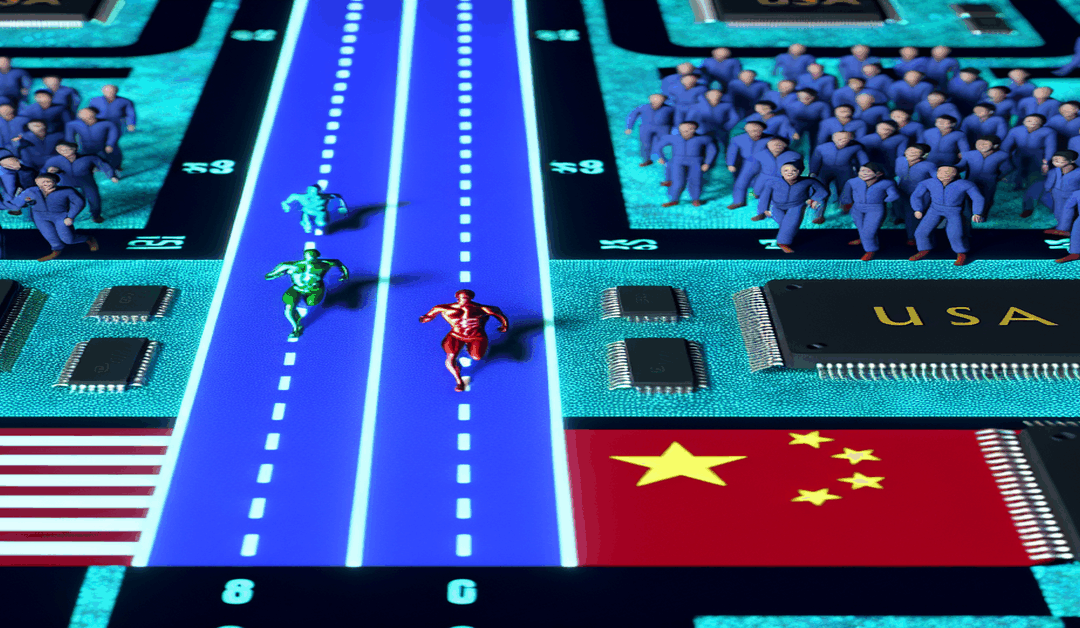The AI Chip Race: Nvidia CEO Jensen Huang’s Perspective on US-China Competition
In the rapidly evolving world of artificial intelligence (AI) and semiconductor technology, the competition between the United States and China has taken center stage. As two of the world’s largest economies vie for dominance in this critical industry, the insights of industry leaders like Nvidia CEO Jensen Huang provide valuable context for understanding the current landscape and future implications.
A Close Competition
According to Huang, the US and China are engaged in an “infinite race” in semiconductor development, with both nations being “very, very close” in terms of technological advancement[3]. This assessment highlights the intensity of the competition and suggests that there may not be a clear winner in the near future. As AI continues to transform industries and shape the global economy, the stakes in this race are higher than ever.
China’s Strengths in AI Research
Huang acknowledges China’s formidable position in the AI chip race, citing the country’s vast resources, technical capabilities, and the fact that half of the world’s AI researchers are Chinese[4]. This concentration of talent and resources underscores the potential for China to make significant strides in AI development and underscores the need for the US to remain competitive.
However, it’s important to note that the US also has significant strengths in AI research, including world-class universities, a thriving startup ecosystem, and a long history of innovation in the tech industry. While China’s rise in AI is noteworthy, the US remains a key player in this space.
The Role of Export Policies
One of the key points Huang raises is the impact of export policies on the global AI landscape. He argues that less restrictive export policies would accelerate the diffusion of AI technology worldwide, ultimately enhancing US competitiveness[4]. This perspective challenges the notion that tighter controls on exports are necessary to maintain a competitive edge and suggests that a more open approach could be beneficial.
However, this view is not universally held, and there are valid concerns about the potential risks of sharing cutting-edge technology with foreign competitors. Policymakers must carefully weigh the potential benefits of increased global collaboration against the need to protect national security and economic interests.
The Huawei Factor
While Huang did not directly address Huawei in the provided statements, the Chinese tech giant’s role in the chip race cannot be ignored. As recent reports indicate, Huawei is increasingly filling the void in China’s chip industry created by US sanctions[2]. This development highlights the complexity of the US-China relationship and the potential for unintended consequences of restrictive policies.
Huang’s emphasis on increased production rather than restrictive measures[4] suggests that he sees the solution to the chip race as one of innovation and growth rather than containment. This perspective aligns with the view that the US should focus on strengthening its own capabilities rather than solely trying to limit China’s progress.
Looking to the Future
As the AI chip race continues to unfold, it’s clear that both the US and China will play significant roles in shaping the future of this critical industry. While competition between the two nations is likely to remain fierce, there may also be opportunities for collaboration and mutual benefit.
For businesses and policymakers, navigating this complex landscape will require a deep understanding of the technological, economic, and geopolitical factors at play. By staying informed and adapting to the rapidly changing environment, organizations can position themselves to thrive in the age of AI.
**#AIChipRace #USChinaCompetition #Nvidia**
-> Original article and inspiration provided by Opahl Technologies
-> Connect with one of our AI Strategists today at Opahl Technologies

